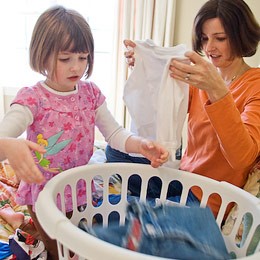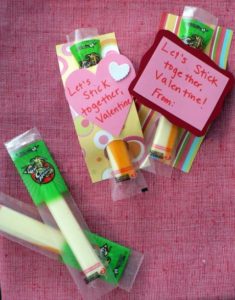
AFTERSCHOOL PROFESSIONALS APPRECIATION WEEK
April 22-26, 2024
This week The Quest Zone is joining with the National AfterSchool Association (NAA) to celebrate the professionals who are at the heart of afterschool programs during Afterschool Professionals Appreciation Week April 22-47.
“We believe Afterschool professionals make a difference in the lives of young people,” said Theresa Tobin-Richardson, Project Manager at The Quest Zone. “We encourage everyone to join us this week in thanking the afterschool professionals in their lives.”
Regional Director Alison Bryant goes on to say, “We offer our heartfelt thanks to these hardworking teachers, and we appreciate them so much; not just this week, but every single day!”
Why is it important to recognize Afterschool Professionals?
An estimated 7.8 million children participate in afterschool programs each year. Today, afterschool programs are viewed as much more than just childcare.
Afterschool programs are widely credited as a way to enhance education in STEM, literacy, the arts, social and emotional learning, health and wellness, and more. With that demand comes increased responsibility for the estimated 850,000 professionals who are making a difference in the lives of our children every day.
What is Afterschool Professionals Appreciation Week?
Afterschool Professionals Appreciation Week is a joint effort of community partners, afterschool programs, youth and child care workers, and individuals who have committed to dedicating time to recognize and appreciate those who work with youth during out-of-school hours.
The week is marked by celebrations and public relations efforts to encourage people to thank afterschool professionals serving children in programs and organizations across the nation.
Who is an Afterschool Professional?
An Afterschool Professional is someone who works with children and youth in diverse school and community-based settings to provide a wide variety of extended learning opportunities and care during out-of-school hours.
Currently, there is an estimated 850,000 afterschool professionals in the US
How can I thank an Afterschool Professional?
- Declare on social media: I appreciate the Afterschool Professionals who make a difference in the lives of young people. #heartofafterschool
- Give a hand-written card from you and/or your child to the afterschool professional in your life.
- Send an email to an afterschool professional’s supervisor describing why that person is appreciated.
- Bring treats to the staff at your afterschool program.
For more information about Afterschool Professionals Appreciation Week visit: www.naaweb.org/AfterschoolProfessionalsAppreciationWeek.
The school year is quickly approaching, and a lot of us aren’t quite ready to give up summer. Late nights will turn into early mornings, and pool days with the kids will turn into math classes. While we enjoy a break, it’s important to start the year off on the right foot. With so much to do, and last-minute vacations to be had, we could all use a little preparation. Here are 6 tips for a successful new school year!
1. Sit down and set goals
With a new task at hand, like the new school year, it’s important to determine goals and have specific things to work toward.
Sit down with your student a few days before the first day of school and brainstorm goals for the year. Do they want to make 3 new friends? Try out for a new sport? Make more As than Bs?
Let them determine what they think is a reasonable goal and set timelines for each. Remember, a good goal is measurable and specific!
Display their goals in a place where they see them daily. The refrigerator or by the door are great places. They’ll already be thinking of the year ahead, and how they can improve from last year!
2. Start cutting back on electronics
Less screen time equals more time for homework and family! As the first day gets closer, gradually start cutting back on your student’s time playing video games, TV time, cell phone use – all the above.
Encourage your student to enjoy time outside before they start classes, put phones away at dinner, or challenge them to spend a few hours without it. To go a step further, determine a time for the kids to give you their phones before bed. The more instances you can find to get rid of electronics, the easier the transition will be when school starts.
3. Have a back-to-school get together
The end of summer is a great excuse for a party! Allow your student to have friends over and celebrate the new school year. This gives you a chance to meet their friends and see who they’ll be spending time with this year. You could even make a friend yourself by talking to parents!
After not seeing friends daily, the initial hello can make some kids anxious. A get together will allow for friends to reconnect and take on the first day together. Parties are fun – don’t be afraid to go all out!
4. Craft something together they can bring to school
Making something together is a great excuse to bond with your kids! Tell your student you’d like to make a school supply of their choice – like binder covers, a pencil holder, or locker/cubby décor. The options are endless, and it’s a great way to get their creative wheels turning! It’ll have them thinking about the first day, but with a positive, excited outlook. Your student will be proud to show their friends their awesome, personalized supplies.
5. Plan it all out
Organization is key for the beginning of the year. When going to buy school supplies, encourage your student to pick out their own planner. Explain to them it’s important to keep track of what’s going on in and out of the classroom. No planner is created equal, so look through each and determine which is best suited for your child’s level of organization.
Before the first day of school, sit down with your student, grab the planner and a pencil, and get to it. Help them write down initial dates and appointments – like meet the teacher night, going to the dentist, and more. As the year progresses, ask them what they’ve got coming up in school that they’ve scheduled. Hold them accountable for keeping up with what’s going on. It’ll help you in the long run while giving them responsibility (even if you always know what’s coming up)!
6. Create a school station
You probably have a designated spot where your student does their homework, but have you considered making a space devoted to all things school? Pick out a space together in your home that works for everyone. Decide what items should be available – you never know what you might need for projects! This is also a great space for you to store graded work and keep up with their assignments.
Your school station can be whatever you envision — plain and out of the way, or bright and on display. No matter what it looks like, it’ll be a great way to keep your school supplies all in one place.
Choose one or all – either way, you’re one step closer to a great school year! We sure are excited for the year to start at The Quest Zone. Thinking about after school care? Head over to our website or Facebook page to see what we’re all about. With our STEM and Homework Zones, our students are sure to have a successful school year.
It’s close to that time of year again! Every student’s favorite – school is out, they sleep in every day, and they don’t have a care in the world besides which Popsicle flavor they’ll choose today.
I know the last thing you want to hear is, “I’m bored!” to be repeated for two straight months. Fortunately, there are reinforcements ready to take those two dreadful words and replace them with fun-filled ones – summer camp!
If you’ve never sent your kids to summer camp, keep reading because here are 7 reasons why you should:
1. Learning Never Stops
Just because school is out doesn’t mean your kids have to stop learning! Research shows that students lose 2-3 months of knowledge every summer. Our activities are designed to help your student hold onto the math, writing and reading skills built through the school year, while having fun! Camp also includes weekly field studies, STEAM projects, and all kinds of activities – because isn’t fun what summer is all about?
2. New Experiences
Summer camp offers a unique experience your kids might not necessarily get at school. They’re exposed to new people and new places, and many times they’re out of their comfort zone, which is crucial to their growth as an individual. This exposure helps them grow and mature during a season when many children grow a little stagnant.

3. Gets Them Active
Summer can get a bad rap for producing laziness. Kids sleep in, stay in their pajamas all day, and play video games rather than go outside. At summer camp, that’s not an option. There are so many activities – outdoors and indoors – and usually video games aren’t one of them. At our Summer Remix Adventure Camp, we offer artistic, athletic, and scientific experiences to get your child up and moving, and learning. From our thrilling Mini-Camps to our unforgettable adventures, your child will always have something new and exciting to do.
4. Occupies the Summer
Many camps run for a week or two at a time; some extend to a month or the whole summer. Our camp lasts all summer long. You can attend the whole summer, a few weeks or just a few days. So, no worrying about finding multiple camps to fill the summer or piecing together time with a babysitter or relative! And each week brings new adventures, special guests and themes, so your kids will never say “I’m bored!”
5. Sparks New Interest
Summer camp is a great way to introduce your students to new experiences and topics. They might find they’re interested in a new sport or creative arts they didn’t know existed. Things like creating an art mural with simple masking tape or building a robotic arm are things they can experience at summer camp that a typical summer at home won’t give them. The opportunities are truly endless; you just have to find the right camp for your kids!
6. Life-Long Friendships
Your students will meet many new people at summer camp, and they may find friends that will stick with them for life! So, if you think you’re sending your kids to camp just to get them out of your hair, you’ll be surprised when they come home with more new experiences and friendships than you could imagine.

7. New Challenges
Of all the fun they’ll experience, one of the most important things your kids will learn at summer camp is how to overcome new challenges. Summer camp will challenge them in new and wonderful ways! What more could you ask for? Weeks of fun and adventure, while maturing and growing as an individual. Summer camp is truly an experience like none other.
The benefits of a quality summer camp program are truly endless. If you’re searching for the right camp for your family, check out our Summer Remix Adventure Camp and contact your local Quest Zone for more information! And, if you’ve got some extra popsicles in the fridge this summer, I’ll take the cherry flavor!
Spring is officially here! That means more daylight, the much-anticipated spring break from school, and every parent’s not-so-favorite task – spring cleaning. The house can get all sorts of grimy after a long winter of tracking in mud, sleet, and snow, making spring cleaning a daunting task. But don’t fret! This is a perfect opportunity to ease the load by teaching your student some new skills and adjusting the household chore assignments.

Here are 9 tips to tackle spring cleaning as a family while teaching your student a little about household responsibilities.
1. Have a plan. Your plan may include organizing, de-cluttering, deep cleaning, or a combination of all – it’s just important to have one! It may be easiest to focus on one room at a time. You can use our Spring Cleaning Checklist to help you stay organized while getting everything accomplished!
Take your list a step further with a chore chart that applies all year. With new-found skillsets emerging through the spring-cleaning process, have a family meeting to decide who can take out which chores and how often to change up the assignments. Make it interactive and flexible! Check out these chore chart ideas.

2. Prioritize tasks. Cleaning an entire home usually involves quite a few tasks, and can be overwhelming for everyone. Make a prioritized list of tasks for each room, being specific about which items need to be completed first in order to qualify the room as “complete.” Be focused, be realistic, and keep track of your progress.
Help your student prioritize the tasks required for their assigned room. Be flexible and let them learn from their mistakes. Allowing them to evaluate messes and determine how to best re-organize may help them consider the aftermath of making messes in begin with!
3. Set rules for decluttering. Make it a point to throw out or donate at least three items from each room you clean. Begin by guiding your student’s decision making, and then let them determine what to donate on their own.

4. Make day of it. Spring cleaning can drag into a week-long or even month-long affair, but dedicating one or two days to “just knock it out” with the whole family can be a great bonding experience. Choose a day at the beginning of spring break, and have the family knock out the spring cleaning checklist before the fun starts. The reward of a fun, carefree spring break might be all the motivation they need!
5. Make it a competition. A little competition between siblings isn’t always a bad thing. Get your students motivated by setting the clock and seeing who can pick up the most items, fold the most laundry, etc. under the time limit. Incorporate a prize, or just have them compete for bragging rights – whatever works for your family!
6. Dance Party! Everyone needs to let loose occasionally. Creating a fun and exciting spring-cleaning playlist can lift the mood and make it all a little more fun for everyone.
7. Rewards. We wouldn’t call it bribing. Instead let’s call it, “rewarding diligent, hard work.” A little incentive can go a long way! Plus, this is a great opportunity to discuss a small allowance for chores.

8. Take breaks. A long day of cleaning can make even the happiest helpers grouchy and irritable. For every hour you spend cleaning, take 10 minutes to go outside for fresh air. Kids can catch cabin fever quickly, so talk to your family about the importance of mental and physical breaks to maintain motivation. They will have loads of high school homework before you know it. Learning this skill early will pay off in the long run.
9. Kid-sized equipment. Pint-sized cleaning supplies can help minimize equipment challenges that lead to frustration (like sweeping with a broom that’s too tall). Give your student tasks they can easily complete on their own with equipment they can handle. Check out these housekeeping tools for kids on Amazon.com.
Whether your house needs a good decluttering, an intense deep clean, or both this Spring, be sure to involve your student. Spring cleaning is an opportunity to develop skills that can help your student take on more household responsibilities this year. Talk about checking all the boxes! So, before you stress about spring cleaning, plan how the kiddos can get in on the action to benefit the entire family.
Love is in the air! Valentine’s Day is the holiday of love, but it’s a great opportunity to express appreciation to friends, too. As your kids are preparing to hand out Valentines in the classroom this year, talk to them about how they can make everyone feel appreciated. Here are five fun, classroom-appropriate treats that everyone is sure to fall in love with.
Treat 1: Homemade Valentine Chex Mix
It’s salty and sweet and oh, so easy! Give this 5-ingredient recipe a touch of love with pink and red items. Have your child write a personal note at the bottom of the cup for a lovely surprise.

Items:
- Pretzels
- Chocolate Chips
- Valentine M&Ms
- Cheerios
- Marshmallows
- Valentine Snack Cups
Step 1: Turn each cup over and write a Valentine greeting on the bottom for classmates.
Step 2: In a large bowl, combine pretzels, M&Ms, cheerios, chocolate chips, and marshmallows. Mix together.
Step 3: Fill each cup with mix. After only 3 steps, your child has a tasty treat for the whole class! Thanks, Pinterest, for the inspiration!
Treat 2: Heart-Shaped Healthy Chocolates
Have your chocolate and eat it, too! Making chocolate from coconut oil offers a healthy twist on a Valentine’s Day classic. Your kids will test out their skills in the kitchen with this sweet treat!

Items:
- Heart shaped pan
- ½ Cup Coconut Oil melted
- 3 tbsp Maple Syrup
- 2/3 Cup Raw Cacao Powder
- ½ tbsp Vanilla Extract
Step 1: Melt coconut oil over low heat.
Step 2: Add syrup, cacao powder, and vanilla and stir together.
Step 3: Line pan and pour chocolate into each heart.
Step 4: Refrigerate for 1-2 hours.
Treat 3: Cutie Oranges
What’s cuter than this? Create a template or write out tags to add to the oranges for a personal touch. Classmates’ parents will appreciate a healthy piece of fruit for a change.

Items:
- Cuties
- Cardstock Paper
- Hole Punch
- String
- Printer
- Clear Bags
Step 1: Place each Cutie in a plastic bag.
Step 2: Head over to https://www.itsalwaysautumn.com/youre-a-cutie-free-printable-healthy-valentine.html to find the free printable of “You’re a cutie!”, or write out your own version.
Step 3: Print out multiple copies of the tag template on a page to save paper. Cut out each individual tag and punch holes in the top.
Step 4: Tie your string around the plastic bag and through the tag. Thanks, It’s Always Autumn, for the template!
Treat 4: String Cheese
Encouraging and tasty! Pick out festive scrapbook paper and personalize the notes to each classmate.

Items:
- Package of String Cheese
- Scrapbook Paper
- Scissors
- Markers
- Glue
Step 1: Cut paper roughly 6 inches long and 3 inches across. Cut holes on strips of paper about an inch from the top, big enough for the string cheese to fit through.
Step 2: Cut out small hearts and write, “Let’s stick together, Valentine!” Leave room for your child to sign their name.
Step 3: Place string cheese through holes of paper, like shown.
Step 4: Glue each note onto the string cheese. Thanks, https://www.blessthismessplease.com/how-to-healthy-valentine-treats-to-give/ for this great idea!
Treat 5: Owl Bags
These bags are so cute, the class will be wondering HOO made them! Add popcorn or any other treat inside them. Test your creativity with this craft, and try to come up with as many owl sayings as you can – it’ll be a hoot!

Items:
- Paper Bags
- Red and Black Construction Paper
- Heart Tags
- Markers
- Popcorn
- Scissors
- Glue
Step 1: Cut out owl eyes and nose from construction paper, or use https://kitchenfunwithmy3sons.com/valentine-owl-craft-paper-treat-bags-free-printable for a free printable!
Step 2: Glue owl eyes and nose at the top of your paper bag.
Step 3: Glue on heart tags on the sides of the paper bag, facing down and out to appear like wings.
Step 4: Cut out a heart for the body, and write a cute owl greeting on it. Glue the heart upside down, with the point under the owl’s nose.
Step 5: Pop the popcorn and add inside your paper bag. Great tips, Kitchen Fun with my Three Sons!
Making a homemade snack, card, or craft is a great way to spend time as a family while learning a few unique ways to show appreciation for others. Happy Valentine’s Day!
After the holiday season, students tend to notice other children in school with their exciting new toys and technology, including cell phones. Your child may have asked you, “When is it my turn to get a cell phone?”
Smart phones can be an intimidating purchase, especially with the risks of unlimited internet access, cyberbullying, and too much screen time. How do you know when it’s the right time to give them a smart phone?
There are several topics to consider when your child wants a cell phone.
1. Your Child’s Awareness Matters
Sometimes it’s more about behavior than age. A 12-year-old who is responsible and aware is more likely to do well with a smart phone than a 14-year-old who does not complete tasks and loses belongings. Consider your child’s awareness –their ability to keep up with items, social cues, and understanding the consequences of their actions.
2. Talk About Screen Time
How well does your child follow rules? If you think they will respect screen time limits, good news, now may be a good time! Studies show that too much screen time can be a bad thing, and it is important to set a limit that works for your family. Smart phones, especially social media platforms, can be addicting. If there is a strong possibility your student reacts negatively to you telling them to put down the phone, wait a little longer, and then have a conversation with them explaining the importance of putting the phone down. If your child is respectful about tasks and rules you give them now, use that as an indicator to how they will react to screen time limits.
3. Consider Whether the Phone is a Need
Sure, your child wants a phone, but do they need it? Ask yourself these questions:
- Do they have a volunteer position or part-time job?
- Are they dropped off at sports practice or activities by someone other than you?
- Do they spend the night away from home? Are they spending time home alone?
- Does your child call you from someone else’s phone?
- Do you have a land line at home?
As your child becomes more independent, a smartphone will become more of a necessity. If you’re thinking they may not need it at this time, but your student enjoys playing games on apps, a tablet is a good alternative.
4. Start Out with an Older Model
If you’re unsure whether your student should have a new phone initially, start them out with an older model. This is good testing ground to see how they handle the responsibility. Take one of your older phones to your carrier and ask them to reactivate it or ask what older models they have available. You’ll save some money while you’re at it, too!
5. Try Middle School
While there’s no clear answer of “when,” middle school is a good place to start. Middle school calls for more responsibility, and students mature more during this time in their lives. Students start to take on extracurricular activities and spend time with friends outside of school and parent supervision.
Remember, not every family nor every child the same, and the timing is different for all! Consider these guidelines, talk it out, and you’ll make the right decision. Want extra help? Check out these resources for more tips on when to get your child a cell phone.
Bells are jingling, Santa is checking his list, and that means one thing—the holidays are in full swing! Amongst all the sales and wish lists, it’s important to teach our kids how to be generous during a season that also brings quite a bit of receiving. Gift-worthy holiday crafts are a fun, rewarding, and thoughtful way to get your kids in the holiday spirit. These crafts are so easy and festive, you’ll want to make them for the whole family!
1. Mason Jar Candle – Once you have all the ingredients, your kids will be able to create the mason jar candle on their own with very little guidance. They will have fun measuring, cutting, and tying the ribbons. And the best part—this simple gift-worthy holiday craft can be re-purposed for teachers, grandparents, or friends for any occasion year-round! Thanks, www.craftsbyamanda.com for the example!

Items Needed:
• Mason jar
• Short candle
• Ribbon
• Fake snow: Search at your local craft store or use Epsom salt!
Steps:
1. Sprinkle “snow” in the bottom of the jar until about a quarter is filled.
2. Place candle on top of “snow.”
3. Measure ribbon to about 12 inches, cut, and tie in a bow on top of jar.
4. Personalize your candle by adding “Love, ____” anywhere on the jar. Add stickers, drawings, or other simple touches too!
2. Holiday Quote Picture Frame – Let their imaginations go wild with this craft! Helping your child pick out a quote to use in the frame is a terrific opportunity to discuss the reason for the season. They’ll be proud to decorate the frame all on their own. The Holiday Quote Picture Frame makes a great festive décor piece that can be used year after year! Thanks, www.fun-a-day.com for the frame inspiration!
Items Needed:
• Simple picture frame (make sure it can be decorated)
• White cardstock paper
• Permanent markers
• Small holiday decorations: buttons, stickers, paint, bows, washi tape, stamps—the options are endless!
• Glue


Steps:
1. Help your child find a festive quote to put on the cardstock.
2. Cut cardstock paper to the size of your frame.
3. Write (or print) and decorate the quote on the cardstock.
4. Decorate the picture frame. Add stickers, doodles, small bows or garland, and other holiday decorations!
5. Place the quote inside the frame. Now, you have a cheerful decoration to get everyone in the holiday spirit!
3. Personalized Mug with Hot Chocolate and Marshmallows – What’s the holiday season without hot chocolate? Everyone loves a nice mug, and personalizing it makes the gift that much sweeter. You will need to help your kids with the oven with this craft, but it’s a great supervised opportunity to discuss safety in the kitchen. Add a packet of your favorite hot chocolate and marshmallows and voila—a super sweet gift! Thanks, www.blog.lilyandval.com!
Items Needed:
• White mug
• Oil-based paint markers
• Hot chocolate packet
• Small bag of marshmallows

Steps:
1. Use paint markers to create any holiday design! Make sure to hold the mug by the handle, not where you will paint it. In case of a mistake, grab nail polish remover to wipe it away.
2. Let your mug dry for about a day.
3. When your mug is ready, preheat the oven to 425 degrees.
4. Place the mug in the oven to bake for 30 minutes. Once it is finished, leave the mug in the oven until it cools down to prevent cracks.
5. Place the hot chocolate packet and bag of marshmallows inside the mug. Add a bow to the handle to give it an extra Christmas touch!
4. Peppermint Bath Bomb– There’s nothing like a gift that helps you relax! Mom, Grandma, or your child’s teachers will especially enjoy this present. This recipe makes enough for the kids to try too, so you can all sit back and enjoy the festive smell of peppermint! Thanks for the tips, www.playdoughtoplato.com!

Items Needed:
• 1 cup baking soda
• ¾ cup corn starch
• ¼ cup Epsom salt
• ½ cup citric acid
• Food coloring
• Peppermint essential oil
• Large bowl
• Spray bottle with water
• Something to serve as a mold (muffin tin with saran wrap, silicone molds, ice tray, etc.)
Steps:
1. Mix baking soda, cornstarch, Epsom salt, and citric acid in a large bowl. Make sure to break up any chunks!
2. Add several drops of food coloring to the spray bottle. Lightly spray the mixture until it is colored and damp.
3. Add several drops of peppermint oil to the mixture and stir.
4. Place mixture into molds and let them dry overnight. Store them in a plastic container.
5. Holiday Scarf – This stylish craft doesn’t get any easier! Kids will love picking out a unique fabric for each of their friends, siblings, or any scarf-lover on their shopping list. Thanks for the idea, www.NeighborhoodMoms.com!
Items Needed:
• 1 ½ yards of holiday fleece fabric (may depend on size of person)
• Scissors
Steps:
1. Lay fabric flat and cut to where it is about 8-10 inches wide.
2. Cut the ends of the fabric into strips roughly 3 inches long, 1 inch wide.
3. Finish off the fringe by tying each strip into a knot at the top.

Make one, make all, or save one for next year! Creating holiday craft gifts each year is a thoughtful tradition that helps children learn to be generous in a season that can tend to focus on receiving. Happy Holidays!
With winter upon us and temperatures starting to drop, it’s time to start thinking about cold and flu season – again.
Children struggle with colds because of their inexperienced immune systems and their tendency to touch everything and anything (and then put it in their mouth). But you can do something to prevent colds and sickness. We’ve put together the ultimate cold fighting strategies for your kids! Read on…
1. Elevate the Mattress
Adding a lift to the mattress at the head of the bed helps your child’s sinuses drain more easily. A rolled towel or yoga mat should do the trick.
2. Load Up on Liquids
While your child may not be hungry during a cold, you should still load your child up with liquids. It’s easy for your little one to get dehydrated when sick, which makes getting better that much harder. Give them warm, clear liquids and lots of water.
3. Use a Humidifier
If your child is starting to stuff up, buy a cool-mist humidifier and set it up near your child’s bed. This will help your child breathe and get some much-needed sleep. Just make sure to clean and dry the humidifier to prevent mold and bacterial contamination.
4. Stop a Stuffy Nose with Saline
Saline nose drops are great for un-stuffing your child’s nose and cleaning out the junk in their sinuses. Simply put a drop of saline nose drops in each of your child’s nostrils and suction with a bulb syringe. Does your child hate nose sprays or drops? Try Breathe Right for Kids. It works by lifting up the sides of your child’s nose and offers fuss-free, stuffy nose relief.
5. Warm Baths
Warm, moist air is an effective symptom reliever, so turn on the shower and let the water flow or give your child a bath. The resulting warm air will help your child breathe more easily.
6. Chicken Noodle Soup
Chicken noodle soup is good for the soul — and for a cold. Chicken soup contains anti-inflammatory properties that help with cold symptoms. Soup is also easy to digest, hydrating, soothing on the throat, and we think it tastes good, too!
7. Don’t Hesitate to Call the Doctor
Does your child have a fever over 102? Is their cough wheezy or dry? Do they have painful blisters on the mouth? Call your doctor. These are red flags that likely require medical attention.
Cold season is tough, but with these easy steps your kids can fight the flu and get back to fun in no time!
What parent doesn’t want the very best for their child? When thinking about our students succeeding in school, we often place that responsibility on a teacher. As parents, a lot of that responsibility falls onto our plate, as well! How can we make sure our students are well prepared for their time in the classroom? It all starts with a few steps at home.
Here are 6 ways to help your child succeed in school!
1. Show your child how to use a daily planner
First things first, they need to be organized to succeed! Let your child pick out their own planner, and sit down together to help them schedule tests and assignments. To give them an example, bring out your planner to show them how you keep things organized. By encouraging them to keep their planner within arm’s reach, they can write down important dates as soon as they get them.
2. Check your child’s assignment book or homework folder regularly
You don’t have to micromanage, but checking your student’s folder with assignments will help you gauge if they are on task or not. Let them know you will check it regularly, so it does not seem as if you don’t trust them. To make this more of a team effort, assign a place for your student to put papers they need you to sign. Putting graded papers together will help you see progress or any changes in your child’s work.
3. Teach your student how to break big assignments into chunks
Tests and projects can be overwhelming. Sometimes, we just need a break! Teach your child how to break up their workload. Have them study for 30 minutes, and then set a timer for a 15-minute breather. Working on a big assignment? Have them work for 45 minutes and take another 45 to clear their head. Showing your student how to analyze and organize their studying and projects into parts will allow them to break it up in a way that connects. Encourage them to start studying a week or two early, by just looking at a little content each day.
4. Have similar expectations as your student’s school for consistency
Sit down with your child and have a refresher conversation on your expectations around missing assignments, late work, failed tests, and other topics. Make sure your student knows their school’s policy for these situations, too. Let them know that these consequences are in the student’s best interests, and to help them have a great school year. Consistency is key. If your consequences and expectations match the school’s, following these rules will become second nature to your child.
5. Make learning a year-round thing
The learning doesn’t have to stop when summer comes – encourage learning activities such as crafts, STEM challenges, museum visits, and more. Summer camps are great, as well. They’ll stay sharp on their academic skills, and have a great time doing it!
6. Make time to talk every day
Last but not least, talk to your child! It seems like a no brainer, but the more genuine questions you ask about school, the more they’ll realize you care about their academic lives. When encouraged daily, school will become important to your student, and they are more likely to take their work seriously.
Success is attainable for your student – especially with a little help from you! For more tips and tricks, check out this website.
Thinking afterschool is the key to success? The Quest Zone can help with that. With STEM activities, digital literacy, NFL Play 60 and more, your child is sure to shine in the classroom. Visit our website for more information!
You’re always hearing about STEM activities in your student’s classroom, but should you extend the learning to home? Yes! STEM enables your child to see how math and science is more than just addition and biology. STEM can increase curiosity and help your student learn what they’re good at! It can even get your child thinking, “what do I want to be when I grow up?”
Here are some of our favorite STEM activities to complete at home.
1. How Strong is Spaghetti?
Looks can be deceiving when it comes to spaghetti! Try this activity to see how materials have different strengths and weaknesses. Use blocks, books, or even shoes to test out uncooked spaghetti’s strength.
2. Hot Chocolate Experiment
This sure is a tasty experiment! The temperature of water sure makes a difference when it comes to a good cup of hot chocolate. Have your student test how quickly hot chocolate mix dissolves with water at different temperatures. Throw a cup of milk in the mix and see how that changes things!
3. Snowball Launcher
Who is ready for a snowball fight?! Minus the snow, of course. This Styrofoam snowball launcher experiment is an easy test to measure how far things can fly – and it doesn’t stop with snowballs. Try different sizes of snowballs, small stuffed animals, ping pong balls, or any other item that will fit in your launcher.
4. Ancient Building Challenge
Build your very own ancient Greek building with this challenge! Just find paper cups and trays, and you’re on your way. Your cups will be the columns, and the trays will be the foundation and roof. It takes testing for believing, but with the right layout, it can support a person! Have your student arrange the cups in multiple layouts and see which is strongest. To take things to the next level, build a double decker!
5. Pringles Ring
If you and your student are in need of a snack, this is the activity to do. They’ll need their thinking caps for this one. Create a ring with Pringles – it sounds impossible, but with the right pattern, your Pringles will turn into a wheel! It will take some trial and error, so make sure to talk thought how different strategies could work with your student.
These activities are all the proof you need to know that STEM outside of school can be fun and accessible! In need of a structured, educational after school experience? Visit our website for information on programs and more. With over 40 locations and partnered schools in South Carolina, we’re sure to find the right fit for your student.
